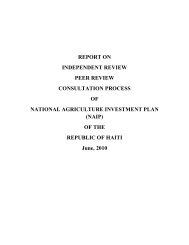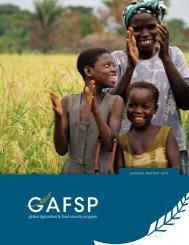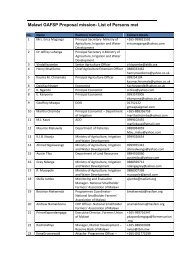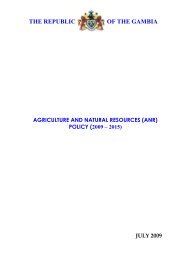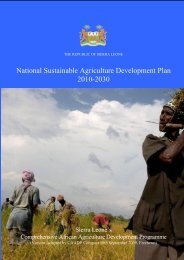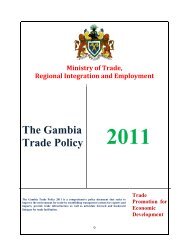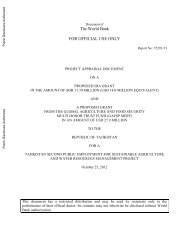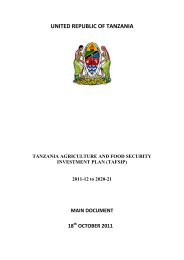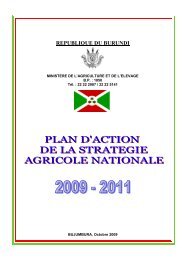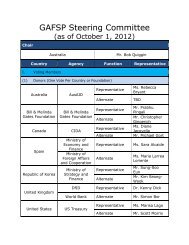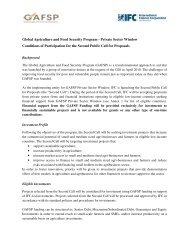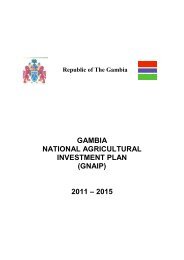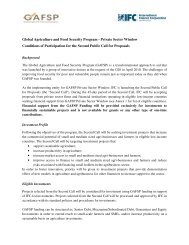Haiti: Poverty Reduction Strategy Paper; IMF Country Report 08/115 ...
Haiti: Poverty Reduction Strategy Paper; IMF Country Report 08/115 ...
Haiti: Poverty Reduction Strategy Paper; IMF Country Report 08/115 ...
Create successful ePaper yourself
Turn your PDF publications into a flip-book with our unique Google optimized e-Paper software.
Strategic lines<br />
• Recruitment and placement of 428 new teaching advisors in the various school<br />
departments with identified needs: 180 in 20<strong>08</strong>, 180 in 2009, and 68 in 2010<br />
• Introduction of the vocational 3 rd cycle in the 116 EFACAPs<br />
• Establishment of a mechanism for steering those who have completed the 6 th and 9 th<br />
year toward the basic 3 rd cycle and toward secondary education or vocational training<br />
• Making the conventional secondary level program available at all lycées and secondary<br />
schools in the country, and the technical program available at 30 lycées and 60 private<br />
secondary schools<br />
• Design and introduction of pathways for transitioning between the education system,<br />
particularly at the secondary level, and the vocational training system<br />
• Establishment of a scholarship program targeting the children of poor families,<br />
especially in rural areas, oriented toward vocational training and the technical program<br />
at the secondary level<br />
• Launching of a literacy training program for the 19-30 age group and the 31-55 age<br />
group, respectively, so as to increase literacy (i) among men to 8.5 percent and 24.5<br />
percent; (ii) among women to 11.2 percent and 31.5 percent; and (iii) among rural<br />
women to 17 percent and 37 percent.<br />
POLICY TO IMPROVE THE COORDINATION OF OPERATORS IN THE EDUCATION<br />
SECTOR<br />
109 The operation of the educational system is quite poorly regulated. More than 70 percent of<br />
schools are not controlled by the State. The functioning of the system is for the most part ensured<br />
through private financing. Over a hundred NGOs are involved in the education sector. The<br />
resources mobilized through this network of organizations fail to achieve the desired effects<br />
owing to the lack of integration into a comprehensive policy in which intervention roles and<br />
strategies would be more clearly defined and articulated.<br />
Objectives<br />
110 The objectives of this coordination are the following:<br />
• Create greater synergy between the State and the other stakeholders operating in the<br />
sector<br />
• Regulate the operation of the educational system.<br />
Strategic lines<br />
• Establishment of the National Office for Partnership in Education (ONAPE)<br />
• Development and regular updating of a database covering all the activities carried out<br />
in the education sector<br />
• Creation and introduction of an accreditation and certification system for private<br />
educational and vocational training institutions<br />
• Establishment of a computerized management information system at the National<br />
Vocational Training Institute (INFP)<br />
• Preparation and implementation of a national qualification framework (CNQ).<br />
POLICY TO INCREASE PUBLIC FUNDING OF THE SECTOR<br />
111 The public resources allocated to the education sector are clearly insufficient, including for the<br />
public schools. The education sector receives but 4 percent of the amount of financing under the<br />
40



